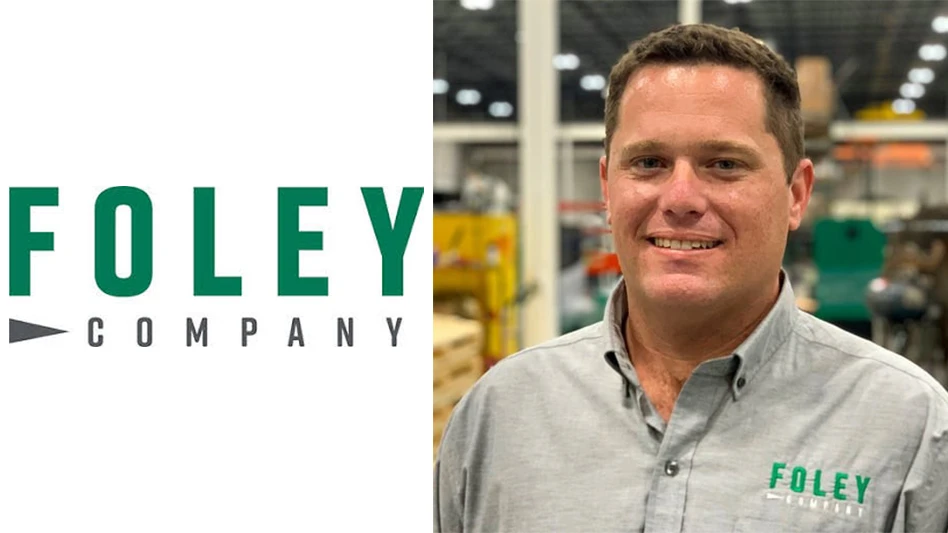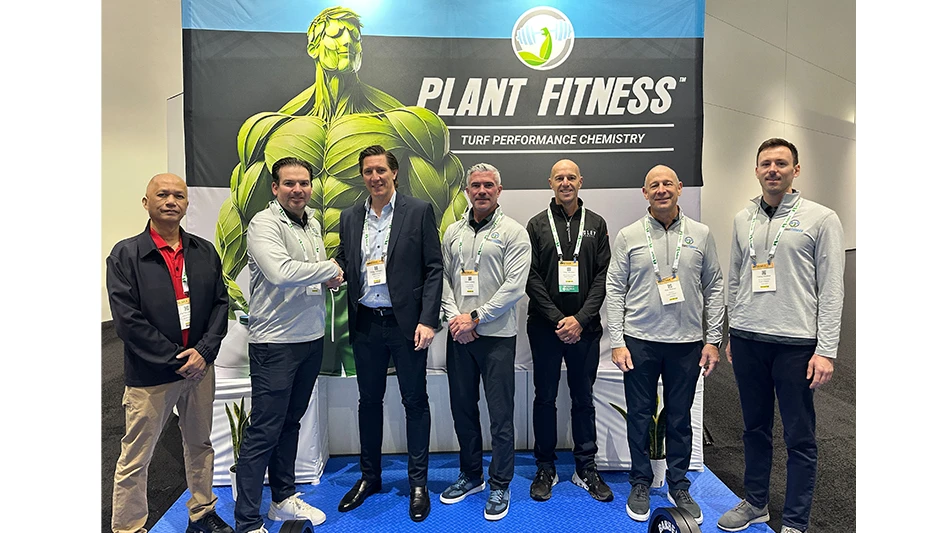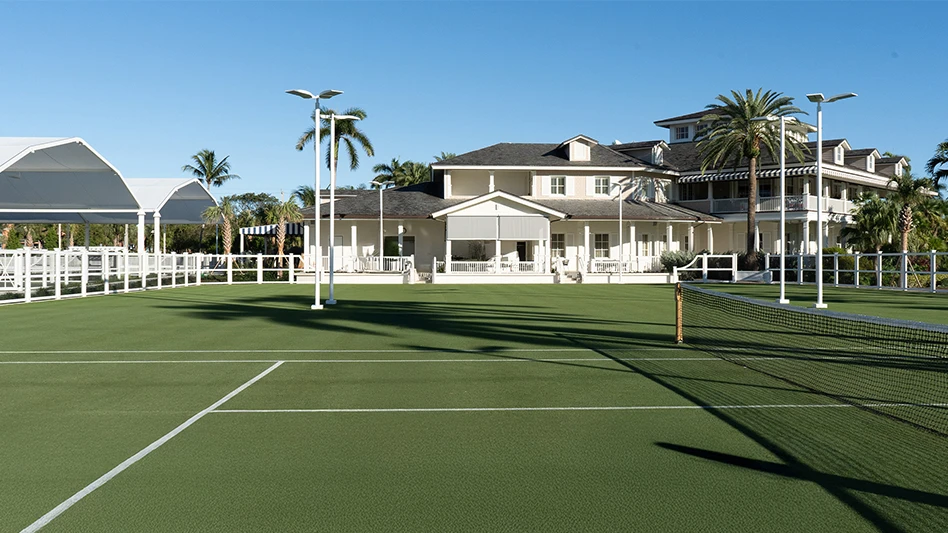
Matt LaWell
For 30 glorious minutes, Shane Omann reclines in a plastic folding chair inside the grounds crew meal tent at Quail Hollow Club in Charlotte. His sunglasses provide him with a shield to rest his eyes as director of green and grounds Keith Wood explains the rigors of championship golf to dozens of guests. The industrial air conditioner in the corner is blowing enough of a gust in his direction to chill a glass of sweet tea.
After this rest, he is ready for another long afternoon of work.
Omann is the golf course superintendent at Quail Hollow Club, which is famous for playing host most springs to the Wells Fargo Championship. That would be more than enough responsibility for most clubs. Two years ago, though, it also provided the backdrop for the PGA Championship, and two years from now, it will open its gates to the Presidents Cup. Championship golf runs through its history.
Quail Hollow Club will likely never double up in the same calendar year — the Wells Fargo Championship moved across the state in 2017 to Eagle Point Golf Club in Wilmington, and it will head north in 2021 to TPC Potomac at Avenel Farms in Maryland — but that clustering of headline events still provides professional and personal challenges for Wood, Omann and the grounds crew filled with 20somethings just out of turf school. Long hours. Demanding players. Tens of thousands of fans trampling their art.
“We don’t get much of a break in how we work,” Omann says. “We’re going to grind all the time.”
How does a club so tied to an annual PGA Tour event shift gears? How do Wood and Omann keep morale high during the inevitable valleys between the weeks when cameras and crowds fill the grounds?
Turns out that just the allure of working those big events is enough for most young turfheads. Omann estimates that after the 2016 Wells Fargo Championship, six or eight members from a crew of about 40 scrapped plans to leave in order to hang around another year and work the 2017 PGA Championship. He expects a similar bump for the 2021 Presidents Cup. And both he and Wood estimate that about a third of the current crew would work both big events.
“People will stick around. It’s just a matter of whether they have the will to go through what it takes to get to that point,” Omann says. “The staff we have now, they know the Presidents Cup is coming, so that’s kind of the leading motivational factor. What’s going to happen after the Presidents Cup? It’s the cycle that’s going to go through.”
“After (the 2020) Wells Fargo Championship, this next group that comes in, they’ll probably want to stick around for the Presidents Cup,” Wood says. “It’s a constant cycle. I’ll work with college professors, run a good internship program, offer them a job after their internship and just keep that cycle going to always have young, energetic people who are interested in the business.”
What other fall and winter challenges stand in front of a crew that normally prepares for a spring tournament?
“The PGA Championship in 2017 was all Bermudagrass because it was in August, and the Presidents Cup will be in October, so it won’t be on overseeded turf,” Wood says. “So a lot of the things we learned about maintaining a non-overseeded golf course are going to be crucial for our success for the Presidents Cup.”
A shorter turnaround between events is on the calendar, too — albeit the six or so months between the 2021 Presidents Cup and the 2022 Wells Fargo Championship.
“It’s just such a tough schedule,” says PGA Tour competition agronomist Chuck Green, who travels to about a dozen tournaments every season, including the Wells Fargo Championship, to provide a communications buffer between the golfers and the club staff. “They work a lot. And to do that double in the same year is a big deal. I’d say it’s tougher on the families because this job, it just eats you up not just in terms of your time but in terms of your focus. To focus on this and then go home when you have a family, it’s really tough.”
“It’s tough, it is,” says Omann, whose daughters are 3 and 1. “I try to call them after morning setup because by the time we’re done, they’re on their way to daycare with my wife. It’s good to talk with them. But tournament weeks, I normally won’t see them for 10 days, because the three or four nights leading up to the Monday before the event, we’ll work until 7:30, 8 o’clock, and I wrap things up with the guys and I’m home by 9. I hope the kids are asleep by then — for my wife’s sake — and I see them Sunday night if I get out of here at a decent time. Sometimes you think, ‘Maybe they won’t even remember who I am.’”
The hours are a part of the job, of course, and not everybody is fortunate enough to work PGA Tour events, or majors, or made-for-TV spectaculars that feature the best golfers in the world. The smallest crowd at the Wells Fargo Championship is bigger than the biggest crowd most superintendents will ever see on the course, and the smallest crowd at the PGA Championship is bigger than the biggest crowd at most PGA Tour events.
You still have to grind. You still have to put in the work. That never changes.
“I tell the guys that the Wells Fargo Championship isn’t much different, in our industry, from the PGA Championship,” Omann says. “We’re going to maintain grass for professional golfers, whether it’s ryegrass or Bermudagrass. Hosting a major has a little more of an impact on the golf course and the feng shui, but as far as what we do, we’re going to go mow the grass and let them play on it.”
Matt LaWell is GCI’s managing editor.
Latest from Golf Course Industry
- Husqvarna rolls out new robotic mowers
- Envu appoints new board chair
- Calusa Country Club opens in Florida
- Tapatio Springs taps Troon for course management
- Nagle plans renovation of Toftrees
- From the publisher’s pen: How did the show go?
- Target Specialty Products announces plans for 2025 Canadian Golf Course Management Trade Show
- GCSAA foundation adds two to board of trustees














